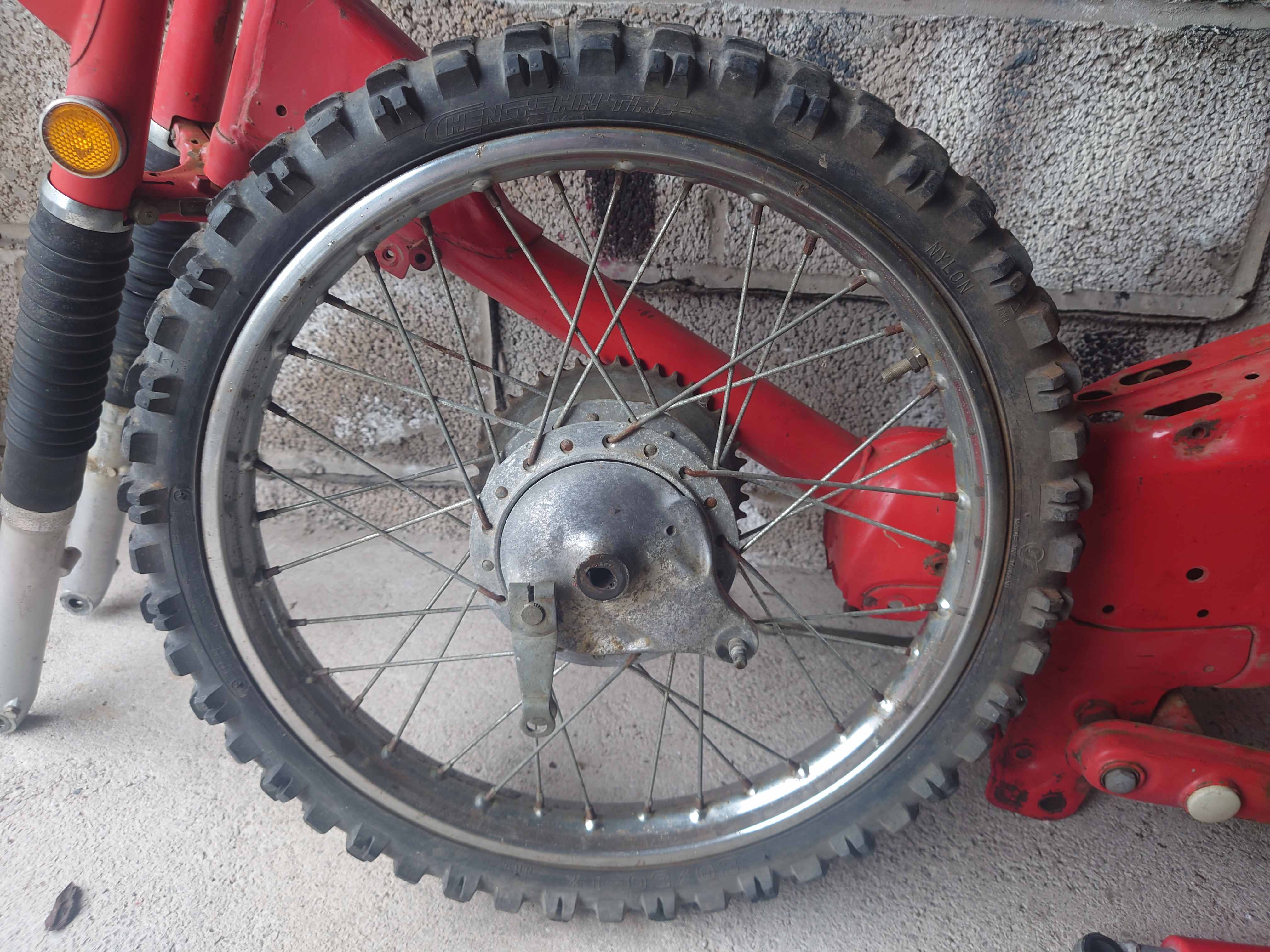Removing the wheels is in itself an easy process, made much more difficult on this bike by having to fight all the old gunk on the axles. Nothing some WD40 and a rubber mallet can't fix. I got the front wheel off much easier than the rear and in my enthusiasm I forgot to take a picture to show the general condition. No matter, the rear wheel was equally crap so here's an idea of what I was working with.

As you can see, the chrome rims and spokes are fairly rusted on the outside (and also on the rim where the tyre sits. I've found that strong white vinegar (10% acetic acid) and a ball of steel wool is an easy and cost-effective way to get these rims back up to scratch. Sure, they don't look like they did coming out of the showroom, but the improvement is marked. If using this method make sure to have a clean rag on hand to wipe away the rust-stained vinegar as you work or it just dries back in. You should only need a small splash for each section you're cleaning at a time. Use degreased and another rag to clean out the inside where the drum brake will sit. (Servicing the brakes will be covered in another post.)
[Front after cleaning]After the wheels have been cleaned the spokes need to be tightened again one side at a time, but after that they're pretty much ready for re-assembly. I'll probably be using this bike more on the road than the trails, so I opted for a pair of Kenda 254s. They still have a nice blocky tread pattern and are more in keeping with the CT90's style but should do better on concrete than the more trail-focused 262s. There are plenty of guides online about replacing tyres so look those up if you're unfamiliar with the process. I found out the hard way when trying to replace the rear on my old Himalayan that tyre is essential to make sure the tyre gets on (and back off) the rim smoothly - use this or a suitable alternative.
I'll upload photos of the finished tyres when I'm done.